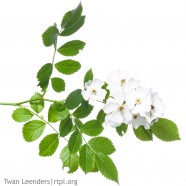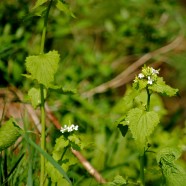Water Chestnut (Trapa natans)
Today’s invasive is an aquatic plant that goes by the name of water chestnut (Trapa natans), and no it is not the kind you might enjoy with a meal. This particular plant has a good habit of taking over water bodies and slow moving streams where it will form dense mats. These mats will prevent sunlight from reaching native aquatic vegetation growing beneath, resulting in the death of the plants and loss of diversity. Water chestnut can also have a negative impact on fish as the invader will decrease the amount of dissolved oxygen in the water as the mats die back in the fall. Last, but...
Read MoreMultiflora Rose (Rosa multiflora)
Originally introduced from Japan into the United States in the 1860’s as an ornamental cultivar, multiflora rose (Rosa multiflora) plantings increased throughout the 1930’s as a form of erosion control and natural fencing for livestock. Since then, multiflora rose has spread out of control and is now considered a noxious weed or prohibited invasive species in a number of states, particularly throughout the northeast.
Read MoreGarlic Mustard (Alliaria petiolata)
We thought we would kick off New York State’s Invasive Species Awareness Week by talking about a familiar invasive species: Garlic Mustard (Alliaria petiolata). Garlic mustard is a member of the Mustard family (Brassicaceae) and can be easily identified by its white flowers and garlicky scent. This invader is taking over disturbed soils along roadsides and is making its way into nearby forests, choking out native understory plants. Once established, garlic mustard will emit chemicals into the soil, preventing native herbaceous plants and tree seedlings from growing. If left unchecked,...
Read More






